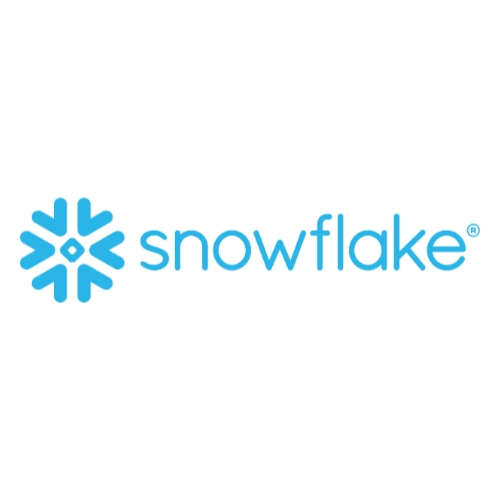With the wider spread adoption of generative AI, now is the time to incorporate AI into your approach to UX and UI design. Industry design leaders have started paving the way for us and companies like Figma, Adobe and InVision continue to enhance our UI design software applications with AI capabilities. You too should acquire this knowledge now so that you can widen the path of learning for your company. Chances are, your team is already using AI in a number of different ways when designing products for internal and external services and offerings, whether you are aware of it or not. Or, maybe you’re not yet using any AI capabilities to enhance your team’s capabilities. Either way, having a clear strategy and approach to using AI will allow for deeper learning, higher insight and more efficient creative and production processes. And as the technology evolves so will your capabilities. Here are a few aspects to think about while implementing AI tools and techniques within a large, enterprise UX team.
Using AI tools for UX and UI design can help identify potential design flaws and usability issues early in the process which will minimize the cost of fixing issues after implementation. AI with UX and UI design can also streamline workflows which gives design teams more time to focus on high-value creative tasks, business goals and user objectives.
Explore AI Tools
Efficiency, Quality, & Effectiveness
It’s important to explore the many different AI tools for UX and UI, such as Figma, Adobe, Framer, MidJourney, UserTesting, etc. This might be the easy, fun part, but in the short term could also potentially impact daily productivity. Discovering, researching and trying out new tools can be time consuming, but dividing up this responsibility among the team can bring you to conclusions more quickly. For example, there are a number of UI design color tools that use AI to aid in choosing color palettes and enhance accessibility standards governed by the WCAG (W3C) and A + AA compliance for users. When researching and test-driving, look for three key aspects: effectiveness, quality and efficiency. Once you have found the plugins, in-app functionality or AI engines to use, share those with the team. And as a reminder, please read and understand the privacy policies and licensing agreements behind each of the AI tools you choose to use and implement.
Determine Wide Integration
Execute a Planned Strategy
Once you’ve explored and decided which new tools will have a positive impact, determine how and when to integrate these into your practice, processes and workflows. Which of my design applications use AI? How might this be vetted through team ceremonies or other internal communications channels?
Integration options could include a dedicated full-time employee that focuses on AI capabilities and product design and development execution improvements. Another approach might be to disperse the new AI responsibilities to all UX team/group members independently. This would allow a higher, more focused exploration of the tools and capabilities. Or, you can hire short-term advice or consultation to execute a planned strategy for UX team improvements through the use of AI. Any of these options are viable but should be done progressively and with measurement. These key measurements should include: effectiveness of the tool (does it produce the “ask” or perform the needed task?), quality of the output (does the level of output quality meet the standards of yourself as a designer, other UX’ers and your colleagues or clients?) and efficiency (is the use of AI cutting time out of your process?).
Share Findings and Advocate
Teammates, Colleagues & Clients Need to Know
Share what you’ve learned and how you’re using it with others with the goal of improving the team and your company. Share your results with your direct team members, teaching them what you know, how you’ve improved your work flow and how it can benefit the team. Share also with your colleagues, executives, development teams and stakeholders throughout your organization. Your key stakeholders will also benefit from understanding how your UX team practices better efficiencies with AI. All of this can be done through creating internal documentation, conducting workshops, giving presentations or even mentorship programs.
Don’t stop evolving once you’ve found what works. Learn about, iterate on and improve the use of your AI integrations over time. This tech will continue to evolve rapidly, so it’s important to try to keep pace. Continuous learning and sharing will improve your UX/UI design practices, the efficiency of your creative process and production and the quality of your resulting products. The quality of your user’s relationships with the products you create is the end game. Iterating with the current and new AI tools and tasks (such as prompt writing) will change you from novice to expert over time. Expert use of new tech and tools will differentiate your business within your markets.
About the Author:
Ken Otte is a Principal UX/UI Product Strategist for Sparq. He’s been practicing UX and UI Design for 20+ years with a background in local, national and global product design. He’s an advocate for user goals and business goals, engaged in mentoring junior designers and speaking for various tech and UX communities.

Snowflake Summit 2025 Announcements
Snowflake Summit 2025’s latest announcements made it clear: the path to genuine AI-driven impact hinges on frictionless access to data, the ability to act on it with clarity, and absolute confidence in its protection. Learn more about how they're making that happen for customers in this article.

How ChatPRD Helps Build Better Stories (and a Stronger Team)
When user stories are vague, it slows down delivery, trust, and momentum. This article by Senior Product Strategy Consultant Traci Metzger shows how she used a lightweight, AI-guided system (ChatPRD) to write clearer, developer-ready requirements that actually accelerated execution.

QA in the Age of AI: The Rise of AI-Powered Quality Intelligence
As organizations push code to production faster, respond rapidly to new customer needs and build adaptive systems, the expectations on quality have changed. It's no longer enough to simply catch bugs at the end of the cycle. We’re entering an era where quality engineering must evolve into quality intelligence and organizations adopting quality intelligence practices are reporting measurable gains across key delivery metrics. Learn more in this article by Principal Engineer Jarius Hayes.

Operational Efficiency in the AI Era: What Matters and What Works
Ever wonder how leading teams are cutting costs without cutting corners? Hint: it starts with AI. In this article by Principal Delivery Manager Kabir Chugh, learn how AI is powering smarter ops, faster deployments, and measurable savings across industries.
